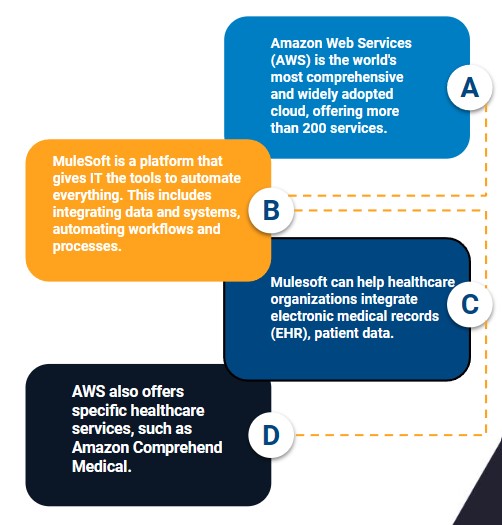
One of the biggest technological problems that companies face is managing all the applications and systems they use daily in their workflow. To integrate all this in a single site there are several tools, among which Mulesoft and AWS Api Gateway stand out.
“Mulesoft focuses on integrating and connecting data, applications and devices. “It is a scalable and lightweight execution platform for APIs, integrations and microservices,” as we explain on our website.
What is AWS Api Gateway?
AWS API Gateway is a fully managed service that makes it easy for developers to create, publish, maintain, monitor, and secure APIs at any scale. It acts as a gateway for your applications and APIs, allowing you to define APIs and their associated backend services, and manage application or user traffic.

Using AWS API Gateway, developers can create RESTful APIs that integrate with other AWS services or third-party services. It also supports WebSocket APIs, which enable real-time, two-way communication between applications and clients.
Some key features of AWS API Gateway include:
- API creation and management using an API Gateway or API console
- Integration with AWS Lambda, AWS Fargate and EC2 instances to host APIs
- Integration with Amazon Cognito for authorization and authentication.
- Support for API caching, throttling and monitoring
- Support for managing API versions and stages.
- Integration with Amazon CloudFront for content delivery and DDoS protection
AWS API Gateway offers developers a fast and easy way to create, manage, and secure APIs at scale.
Key Differences Between Mulesoft and AWS Api Gateway
Mulesoft and AWS API Gateway are two popular tools used for API management. Although both offer similar functionality, there are some differences that could make one a better choice than the other depending on the context.
Here are some key differences between Mulesoft and AWS API Gateway:
Integration capabilities
Mulesoft offers a comprehensive integration platform that includes API management, data integration, and application integration. AWS API Gateway, on the other hand, focuses primarily on API management. If you are looking for a more complete integration solution, Mulesoft might be a better option.
Easy to use
AWS API Gateway has a very intuitive user interface that makes it easy to configure and manage APIs. Mulesoft, on the other hand, may have a steeper learning curve due to its broader range of functionality.
Scalability
Both tools can handle large volumes of traffic, but AWS API Gateway is built on top of AWS infrastructure, giving it an advantage in terms of scalability and reliability.
Prices
AWS API Gateway offers a pay-as-you-go pricing model, which could be more cost-effective for smaller projects. Mulesoft, on the other hand, has a more structured pricing model that may be better suited for larger enterprise projects.
Security
Both tools offer a variety of security features, such as authentication and authorization, but AWS API Gateway's integration with AWS security services, such as AWS Identity and Access Management (IAM) and AWS Key Management Service (KMS), make it easier to use. implementation. end-to-end security.
In conclusion, while both Mulesoft and AWS API Gateway are effective solutions for API management, choosing between the two largely depends on your specific needs and preferences. Consider factors such as integration capabilities, ease of use, scalability, pricing, and security to make an informed decision.
We recommend you on video

